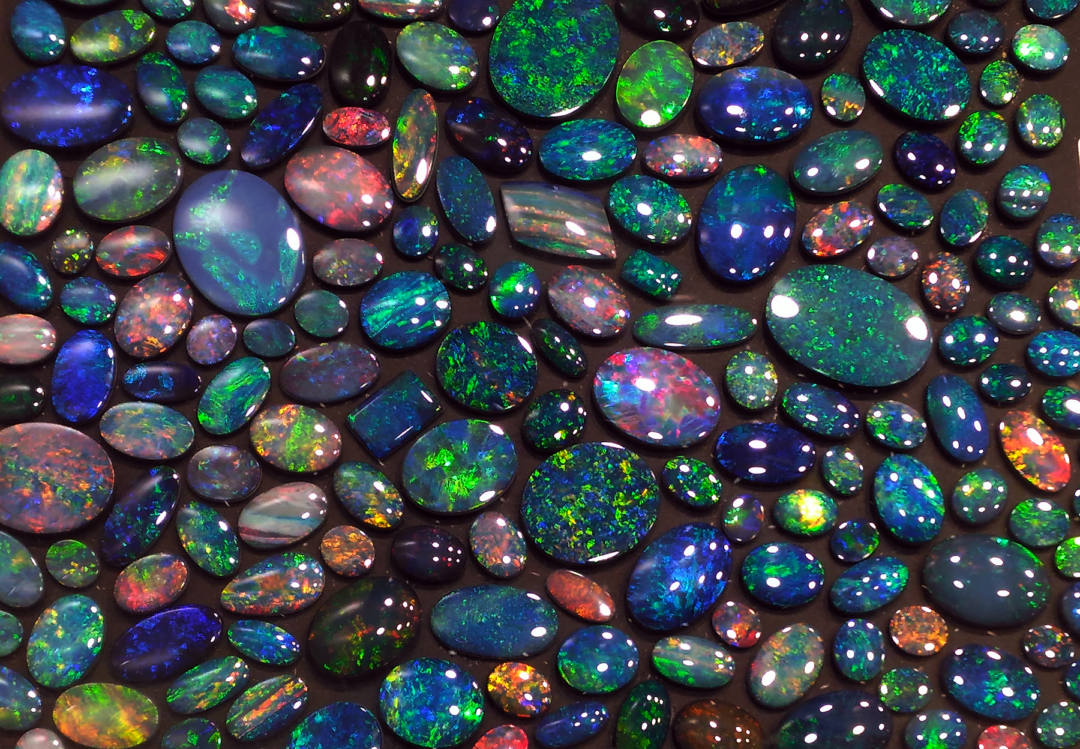Opals are a gorgeous phenomenon that has occurred within the Earth over time, which mimics displays of light shows in the sky. They display vibrant color plays and stunning design, as they turn positions. Opals are so lovely that they have inspired many people to devote their lives to them. Whether it be with sheer fascination, or obsession, one can never forget the legends of opals.
The first recorded name being given to the stone was ‘Opallos’, which is ‘to see a color change’. It is mostly found in the deserts of the world. Light Opal comes from Coober Pedy, supplying most of all production. Black Opal comes from the Lightning Ridge region of Northern New South Wales. The gem grade is a magnificent translucent material known as crystal.
Different types of opals exist, such as; the black opal, boulder opal, fairy opal, crystal opal, milk opals, fire opals, resin opal, wood opal, menilite, which is brown or grey; hyalite, a colorless glass-clear opal sometimes called Muller’s glass; geyserite, also called siliceous sinter, deposited around hot springs or geysers; and diatomite or diatomaceous earth, the accumulations of diatom shells or tests. There are two types of opals here: precious and common.
Most opal is 50-65 million years old, dating back to the Cretaceous period when dinosaurs lived. The color inside of an opal is known as fire. Boulder opal occurs in the boulder opal belt, an area between the New South Wales border and northwest Queensland. It forms on a dark ironstone and occurs as a thin uneven layer. Light opal is the most common type of opal found and refers to both the crystal type opal (translucent) and the milky opal (opaque). Welo opal is classed as a mineraloid, unlike crystalline forms of silica, which are classed as minerals.
Aborigines believe they have lived in Australia since the beginning of all creation. This culture has produced many myths and legends about opals over this span of time. Below, we are going to explore some of the most popular ones. The Aboriginals believe in a place called the “Land of the Dead”. This place was also commonly known as the “sky-world” in which rainbows are a sign of beauty and divinity.
 Andamooka
Andamooka
Andamooka, Australia is the name of the place where modern day peoples first discovered the opal. Sam Brookes and Roy Sheppard happened upon this revelation in 1930, during a thunderstorm. They were standing beneath a tree when suddenly; something shiny caught their eye in the rain. Upon closer inspection, the gem revealed herself as Opal. The name Andamooka means, “large waterhole” in aboriginal languages.
In the process of digging, we have uncovered fossils of dinosaurs and opal. That means this place is the only known in existence to uncover stones so ancient. It has made this mine into a legend. In fact, the area is so prestigious, even the queen herself wears a regal piece found here. It is milky white, oval with yellow lightning penetrating the circumference of the jewel, as though it is living. It sets in front of a gate of diamonds, which protects her throat. There is also a pair of matching earrings to compliment this angelic amulet.
In the surrounding location, several rocks known as quartzite are commonly found. It is within these fragments of the dirt where most opal is created. The locals know them as the painted ladies. They are rectangular and smooth, flat stones of a grey uncountenanced disposition, developed by splotches of royal hue color tones, in varying strokes of paint, in mixed compositions.
Aurora Australis
The Aurora Australis is considered the world’s most valuable black opal. It was found in 1938 at Lightning Ridge, Australia. After cutting and polishing, it weighs 180 carats and is 3 inches by 1.8 inches. The stone has a rare harlequin pattern with reds, greens and blue colors against a black backside. The shape is oval. Also, found on the bottom is an imprint of a sea starfish.
In 2005, the opal was appraised at one million dollars. It is the first stone of its kind that has been mentioned in literature. It belonged to Charles Dunstan, who found it in the ground at only 6 meters. It was popularly believed to bring in 100 pounds in currency to the discoverer.Because of the blue and green colors that sparkle across the surface, it brought to mind the Australian sky, when the aurora lights made a spectacular sparkling show across the land. At the time, the colors were not the most popular to warrant a high price but, eventually its beauty was appreciated at a high value.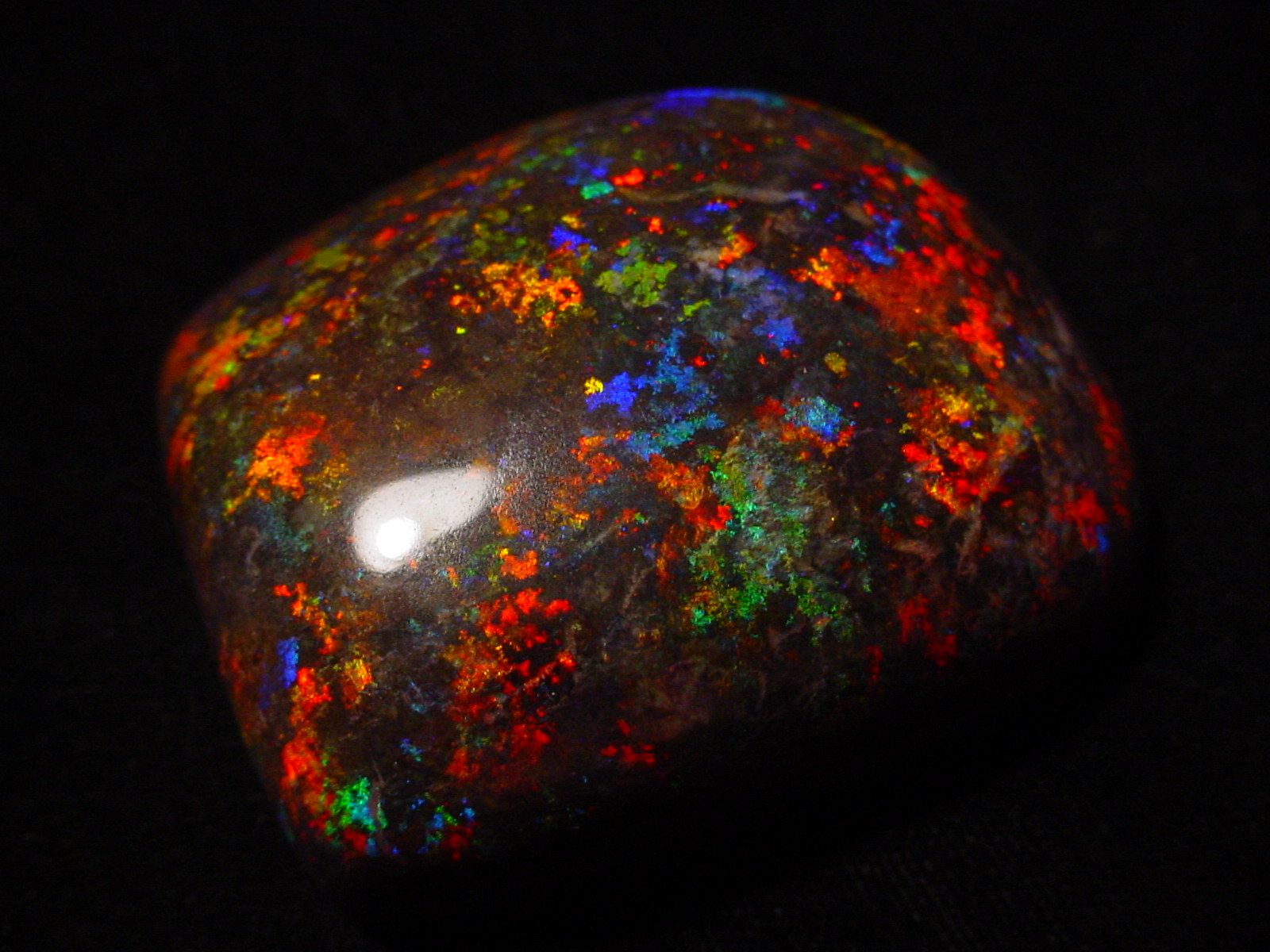
Greek Myth
The ancient Greek people believed that it was a very lucky stone as it portrayed a multitude of colors and patterns in surprisingly rare arrangements. It was thought to bring the owner psychic abilities and improved intuition. When the king of their Gods Zeus defeated the Titans and when his tears stormed the ground, they became Opals.
The Greeks certainly appreciated beauty in many forms. To be honored so highly in their culture was an elegant compliment. Truth prevails in the light and so, those who are bathed in the presence of Opal will be more likely to let their guard down and be vulnerable in honesty. The Opal will bring out your most spiritual attributes in a divine resonance of ancient time.
The Opal was known as the “ophthalmios” or, the eye stone, during the Middle Ages. In this and other parts of the world, it was considered a talisman to ward off the curse of the evil eye. It can awaken many visions and protect the eyes from disease or sickness.
The Unlucky Stone
If Opal is not your birthstone, it is thought that it will bring bad luck. This concept came because of the fragile nature of this beautiful treasure. The opal is prone to easily break and fracture, causing it to fall apart into pieces. It is very rare to find one without sand, inclusions or cracks.
However, because of the crystalline rainbows, which form in the spider webs of glitter, it can be considered very lucky as well. One that contains a lot of sparkle is known to hold ‘fire’ and is desirable. The more color and clarity there is, the better the quality of the jewel.
When opal is heated up too hot without the use of water to cool it becomes fractured. When a lapidarist cuts the stone with a saw, the person can create only mud with the chips and fragments, which comes off. With all issues of luck in folklore, circumstances differ dramatically.
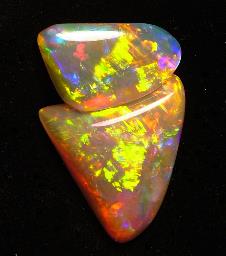 European Fantasy
European Fantasy
For a long period of time, the Europeans associated the opal with prestige and luxury. In the late 18th century it became unpopular when the favorable conditions of the country depleted significantly. The Black Death was a widespread outbreak which killed most in its way. A great power fell then from the Opal, as it was thought that it’s long life was attributed to its bright colors and that if someone fell dead with it close by, they would suck it’s energy, leaving it looking depleted and dull. Marked in patterns and wavelengths, colors are lost forevermore.
In the 19th century, King Alfonso XII of Spain received an unwelcome gift, sent in rumor by a vengeful woman, whom he had rejected. He gave it unsuspectingly to his wife and she died suddenly. He wore the ring after that incident and then also died. It then traveled throughout his family bloodlines, murdering relatives along the way.
The curse on this stone in such a location brought about horrible stigma with it. Often appearing as the face of luck, in which a balance must be made in order to appease the natural order of the universe. From as far back as we can remember, are the souls of the lost, like bones turned to rainbows and stone, glowing in a florescent darkness, unbound by the Earth.
Australian Rainbow Serpent
Rainbows in mythology history represent many different types of energy. In Aboriginal stories, a giant rainbow snake exists as the Rainbow Serpent. This vision comes from the dreams of immortals. Together, they band in unison to shape the universe. It is a majestic paramount of power and magick fused together with harmony, into one wavelength.
The place where the creature originates is occasionally referred to as Dream Time. With all the rare beauty that manifests in this location, such as in the Heavens and Earth, is a boom of spectacular experiences you could find nowhere else. Australia is thought to be the farthest of ancient lands of the old world, which permeates a higher degree of importance with creation myths, due to a prevailing hierarchy. With all these fantastic stories is the underlying message that opals bring angels and legends to life.
Aboriginal Australians arrived by sea from Maritime Southeast Asia, between 40,000 and 70,000 years ago. Their artistic, musical and spiritual traditions are amongst the longest surviving such traditions in human history. Aborigine people believe that they share their being with their country and all that is within it forever.
Rainbow Opal
Of the three basic types of Opals, “Precious Opal,” also called “Rainbow Opal,” is the rarest, mined in a limited number of locations worldwide and produces brilliant flashes or streaks of iridescent color when turned in the light. This is known as the “play of color.” The color is not due to any pigment in the stone, but are optical effects created when the microscopic 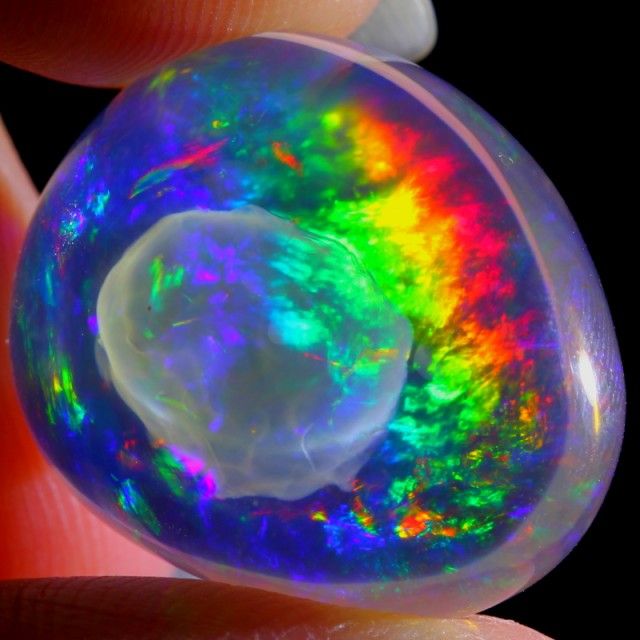 spheres of silica hardened. The spacing between the spheres causes light waves traveling through Opal’s internal structure to diffract and break up into the colors of the spectrum. The size of the spheres and their geometric packing determines the color and quality of the diffracted light and the value of the Opal.
spheres of silica hardened. The spacing between the spheres causes light waves traveling through Opal’s internal structure to diffract and break up into the colors of the spectrum. The size of the spheres and their geometric packing determines the color and quality of the diffracted light and the value of the Opal.
Rainbow Goddess
According to Hesiod’s Theogony, Iris is the daughter of Thaumas and the Oceanid Electra and the sister of the Harpies: Aello and Ocypete. Iris is represented either as a rainbow or as a beautiful young maiden with wings on her shoulders. In some texts she is depicted wearing a coat of many colors. With this coat, she actually creates the rainbows she rides to get from place to place. Iris’s wings were said to be so beautiful that she could even light up a dark cavern, a trait observable from in the story of her visit to Somnus, in order to relay a message to Alcyone.
Rainbow Crystals
The notion that the rainbow bridge to heaven is attainable by only the good or virtuous, such as warriors and royalty, is a theme repeated often in world myths. In Navajo tradition, the rainbow is the path of the holy spirits, and is frequently depicted in sacred sand paintings.
The rainbow is depicted as an archer’s bow in Hindu mythology. Indra, the god of thunder and war, uses the rainbow to shoot arrows of lightning. The Sumerian farmer god Ninurta defends Sumer with a bow and arrow, and wore a crown described as a rainbow.
According to Genesis, after Noah saved the animals from the Great Flood, a rainbow appeared. As the flood had killed all other living beings, the rainbow came to symbolize God’s promise that he would never send another flood to destroy all of 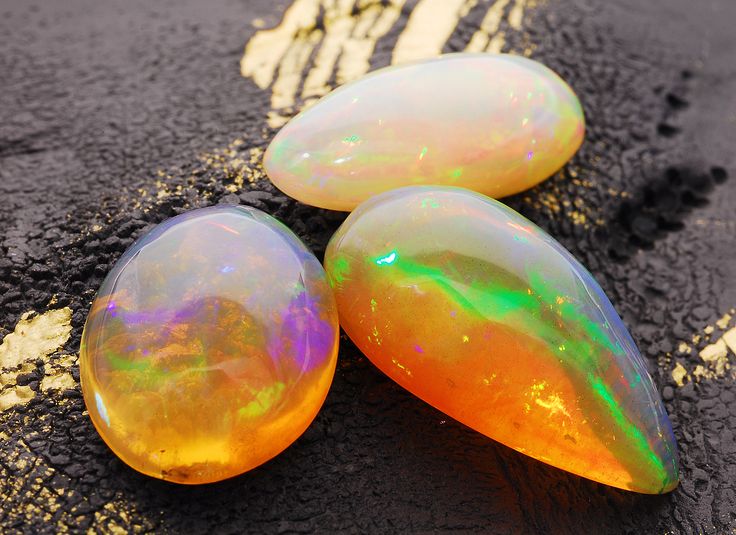 the earth and that never again would all living things be killed in the waters of a flood. For some native people, the rainbow around the sun is considered to be a sign from God, marking a time of great change.
the earth and that never again would all living things be killed in the waters of a flood. For some native people, the rainbow around the sun is considered to be a sign from God, marking a time of great change.
Volcano Opals
In volcanic rocks and adjacent environments the opal appears to fill only in cracks, whereas in sedimentary rocks there are a variety of spaces, created by the weathering process. Much of the opal deposition is not precious. It is called “potch” by the miners, or common opal by the mineralogist. The many variations in the types of opal, depends on a number of factors. The climate provides alternating wet and dry periods, creating a rising or falling water table, which concentrates any silica in the solution. The silica itself is formed either by volcanic origin or by deep weathering of Cretaceous clay sediments producing both silica and white kaolin.
The volcano itself does not make it. The lava, either Rhyolite or Basalt, has air bubbles in it (called vesicles) and they are the future home of the opals. After a while, the lava cools and silica rich springs begin a slow deposition, which will most likely form common or precious opal. This is what makes each piece so unique and wonderful.
Legends of Opals
Perhaps in the future, some gorgeous watery place with a cloud forest casting sun and rain onto the ground will create another masterpiece collection of Opals. Opal is formed from a solution of silicon dioxide and water. Wherever the elixir forms, it prepares to harden with its secrets trapped inside. The moment they are released, is when they are touched by hands.
In turn, they are used to set into jewelry, art and freeform. The allure attracts many buyers and admirers from all over the world. This stone is considered the most awesome as all, because of the fact that it holds all the qualities of others, in one. It is definitely a treasure to be appreciated and valued.
May fate be with you as your eyes take witness to the magnificent creation of wonder and inspiration. Its legends will truly live on forever, from a Holy Grail, which has dried up and fell over, pouring out rainbows in an hourglass of time and circumstance, by the universe itself. Let angels guide you to the foundation of eternity with sparkles and stars laid to rest upon your head, like a crown of light and fire to behold forevermore…
By Deanna Jaxine Stinson, Amateur Geologist
Halo Paranormal Investigations – HPI International.
www.facebook.com/#!/groups/HPIinternational/

